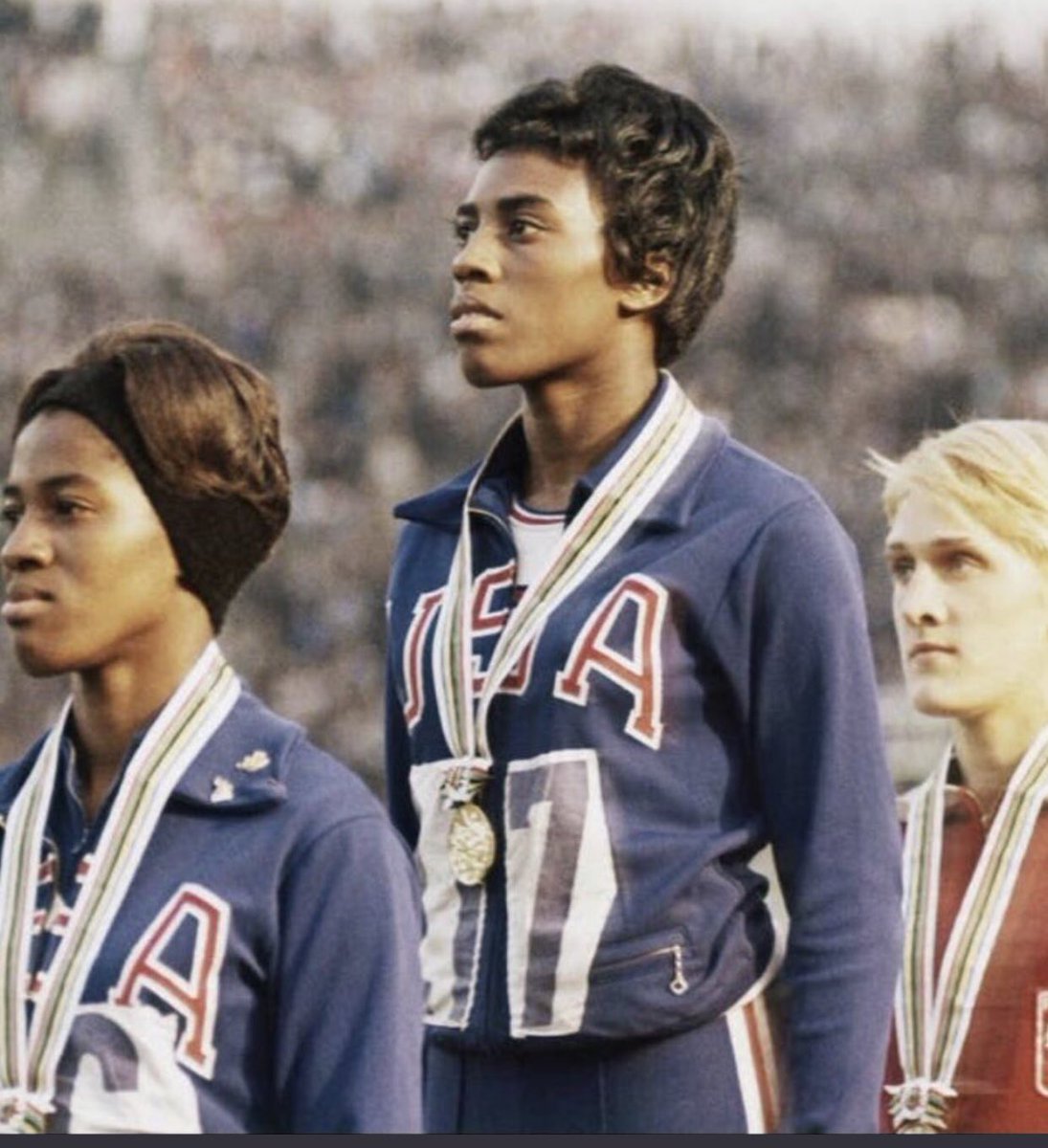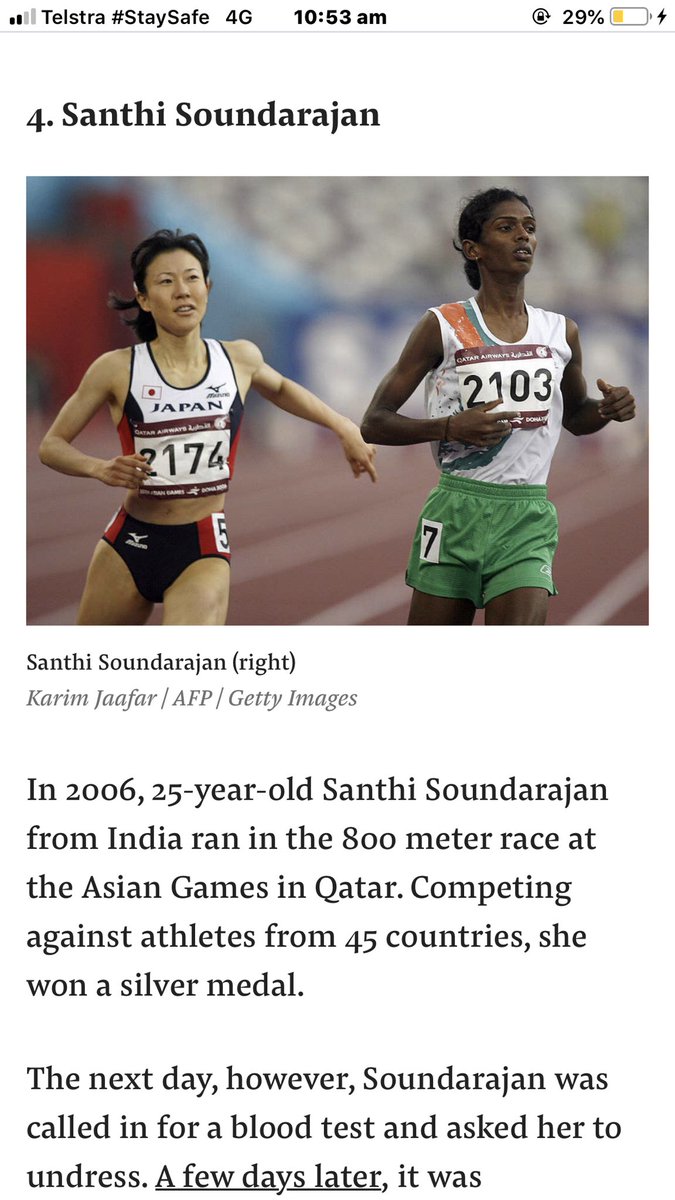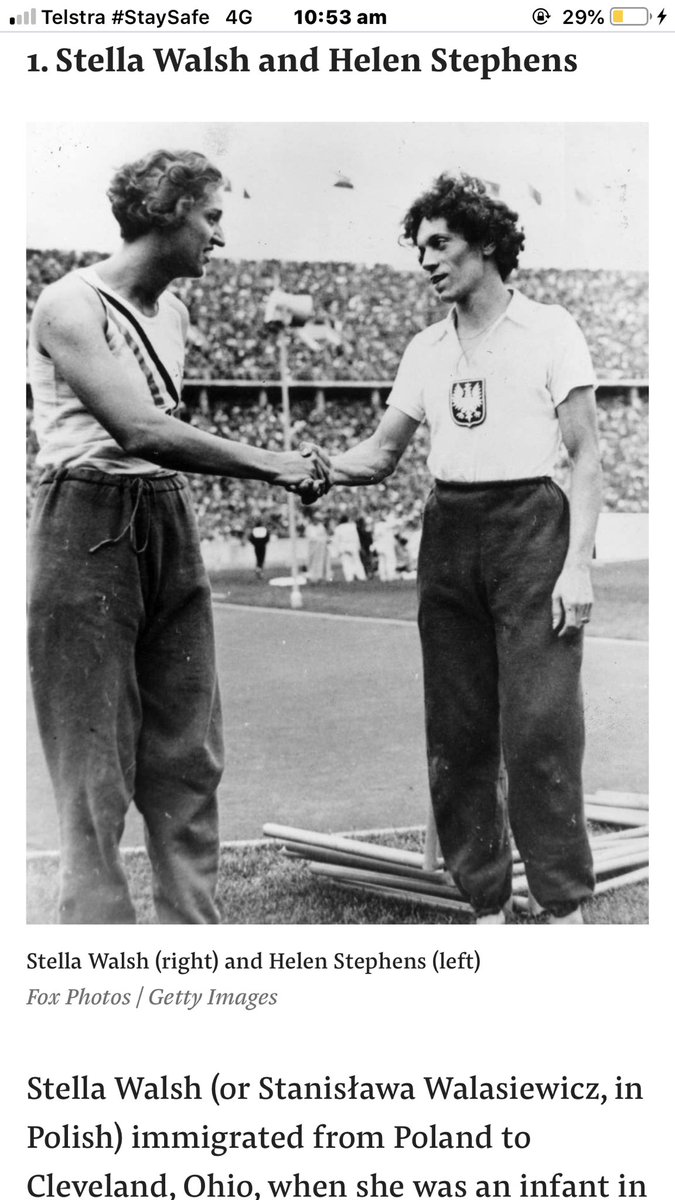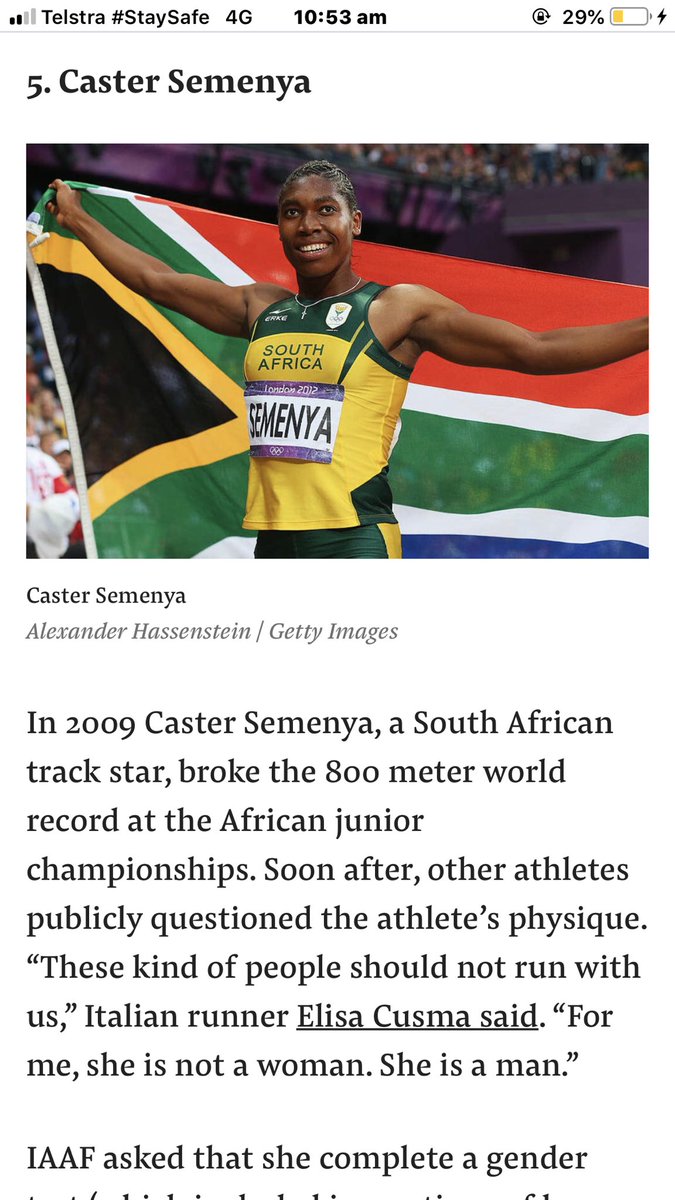Hormones & Sports? We have been there before!
At the 1936 Berlin Summer Olympic Games, 18-year-old American sprinter Helen Stephens was accused by rival athlete Stella Walsh [Stanisława Walasiewicz] of being a man.
1-
At the 1936 Berlin Summer Olympic Games, 18-year-old American sprinter Helen Stephens was accused by rival athlete Stella Walsh [Stanisława Walasiewicz] of being a man.
1-
In a twist of irony, an autopsy eventually revealed that while Stephens did not appear to have any sort of intersex condition, her accuser did.
2-
2-
Walsh was revealed to have both 45X0 and 46XX chromosomes, along with “male sex organs.”
Stephens beat Walsh in the 100 meter dash. Stephens was the accused of being male and was forced to submit to a genital inspection to confirm her gender.
3-
Stephens beat Walsh in the 100 meter dash. Stephens was the accused of being male and was forced to submit to a genital inspection to confirm her gender.
3-
Going back to the 1960’s and the XY/XX chromosomes classification makes no historical, scientific, ethical, legal or social sense.
4-
4-
Ewa Klobukowska of Poland competed in the Tokyo Olympics in 1964, at the height of the Cold War. Running in the 100-meter relay, she helped set a new world record and won a gold medal.
5-
5-
After the media wrote about her masculine appearance, in 1967 Klobukowska was the first athlete to be tested with the IAAF’s new chromosome test, which was viewed as a “simpler, objective, and more dignified” alternative to the physical examinations.
6-
6-
The test results were never made public, but the IAAF ruled that Klobukowska had a chromosomal anomaly that disqualified her from competing in the female category. The organization publicly criticized Klobukowska for being a male imposter, and stripped her of her medals.
7-
7-
She had a son in 1968. Thirty-one years later, the IOC returned her medals.
8-
8-
For decades, sports governing bodies have sought a single biological criterion by which to exclude some women from the female category;yet the idea of a true sex is mistaken, with deers in the headlights making something incredibly complex seem simple and binary.
9-
9-
The latest effort claims gonads and the testosterone they have a role in producing – as the key factor in what constitutes a “biological male”. But to reduce sex to a single trait is to profoundly mischaracterise decades of research into sex biology.
10-
10-
The science is clear: there is no single physiological or biological marker that allows for the simple categorisation of people as male or female. Gonads were once thought to define one’s sex. In the 1800s.
11-
11-
By the 1950s scientists had identified at least six markers of sex: chromosomes, gonads, hormones, secondary sex characteristics, external genitalia and internal genitalia. While these markers may align along a female-typical or male-typical path, that’s not always the case.
12-
12-
What’s more, each of these markers comes in more than two versions. For example, people are often assumed to have either XX or XY chromosomes, but some individuals are born with an extra X chromosome and others have a mosaic where each cell has one karyotype or the other.
13-
13-
So while sex is commonly thought to be straightforward, consisting of two clear categories of male and female, the breadth of human physical variance is more complex than the categories suggest. The upshot: there are many biological markers of sex but none is decisive.
14-
14-
Claiming that one factor is does not reflect the science of sex biology, and certainly can’t be used to determine who can and cannot compete in sports.
15-
15-
There is another outdated idea circulating that T is “the male sex hormone” & that its presence in women is a problem. But this, too, is wrong.This idea was cemented long before the hormone was even isolated in 1935 & has persisted despite decades of science showing otherwise
16-
16-
Semenya, Niyonsaba, Negesa, & other femalea with hyperandrogenism need not alter or manipulate themselves to fit ideals of womanhood that were constructed explicitly around their exclusion. Their bodies are simply not the problem
They never were
17-17
https://twitter.com/kirstimiller30/status/1264487289679278081?s=21">https://twitter.com/kirstimil...
They never were
17-17
https://twitter.com/kirstimiller30/status/1264487289679278081?s=21">https://twitter.com/kirstimil...
@threadreaderapp please unroll

 Read on Twitter
Read on Twitter![Hormones & Sports? We have been there before!At the 1936 Berlin Summer Olympic Games, 18-year-old American sprinter Helen Stephens was accused by rival athlete Stella Walsh [Stanisława Walasiewicz] of being a man.1- Hormones & Sports? We have been there before!At the 1936 Berlin Summer Olympic Games, 18-year-old American sprinter Helen Stephens was accused by rival athlete Stella Walsh [Stanisława Walasiewicz] of being a man.1-](https://pbs.twimg.com/media/Eie0qtxUMAAG9Th.jpg)







